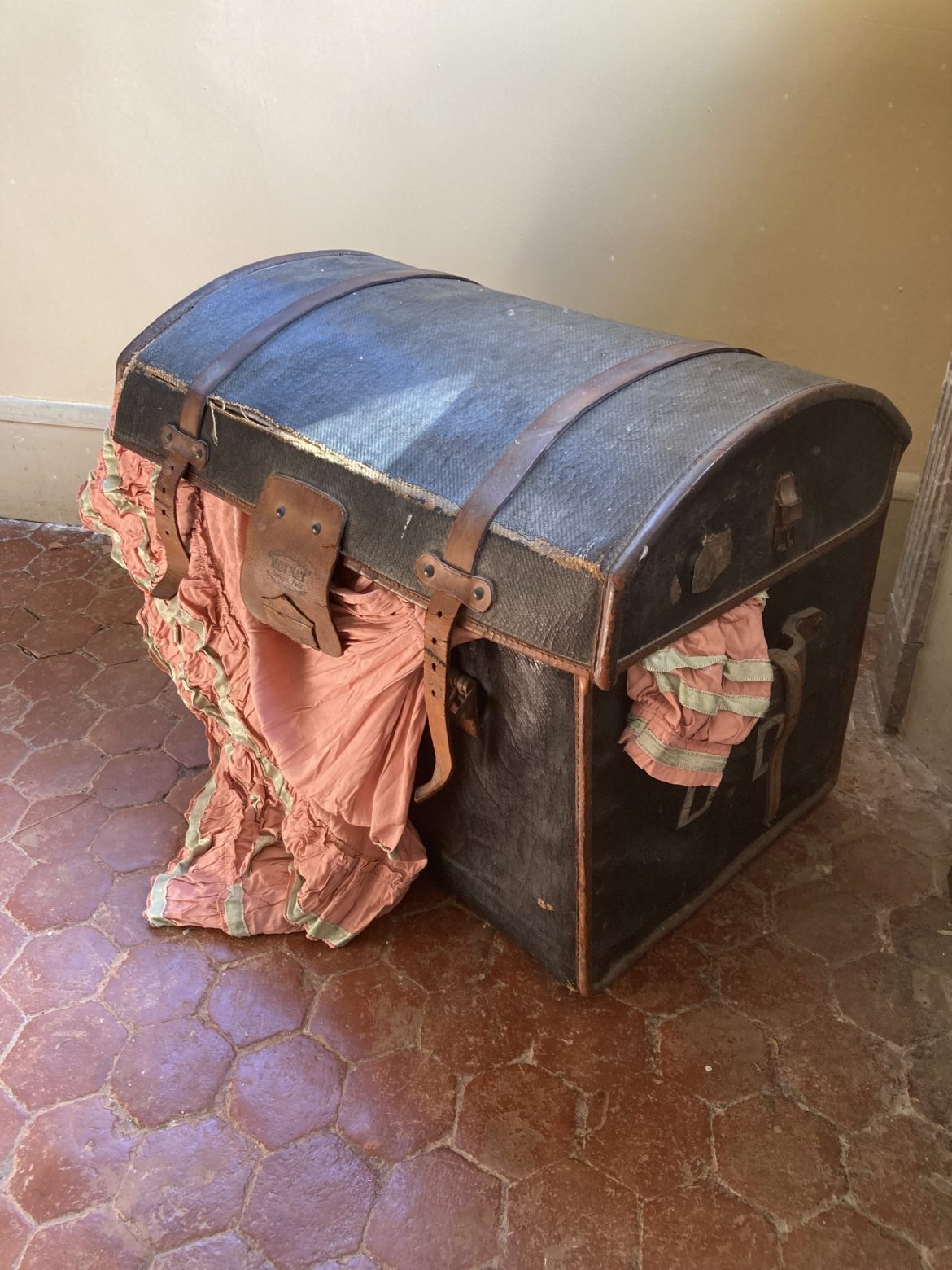She’s Not There: a photo story in three parts. Interventions at Chateau Sacy
1. Part One. Reverie: a descent into the unconscious
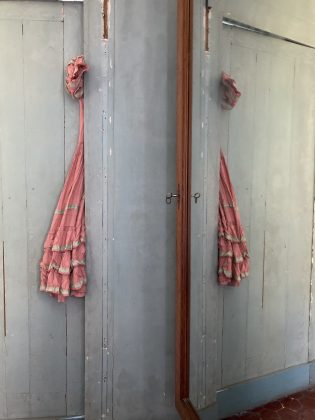
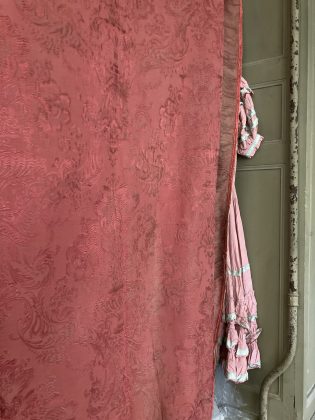
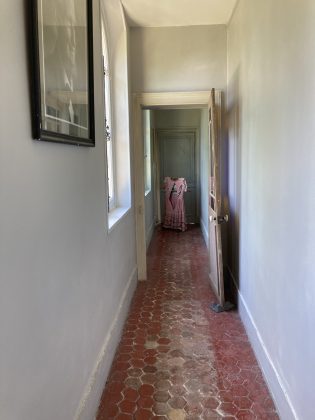
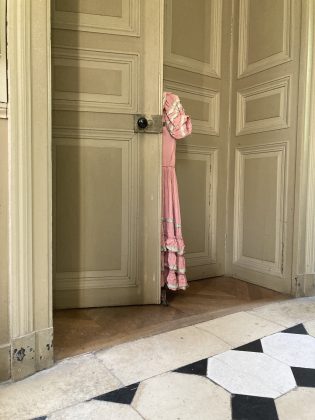
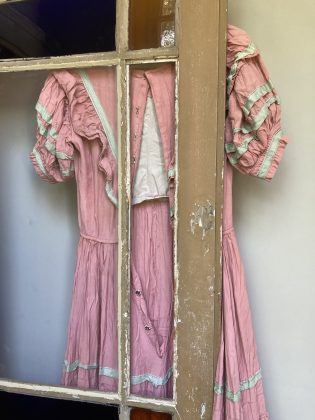
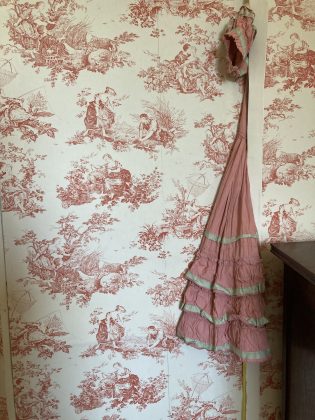
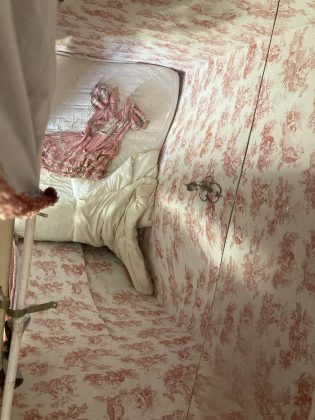
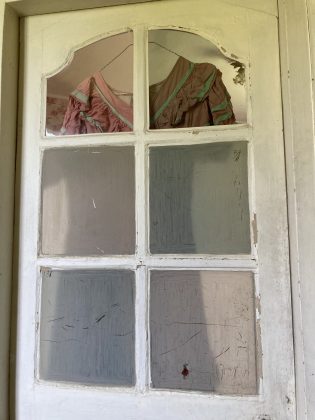
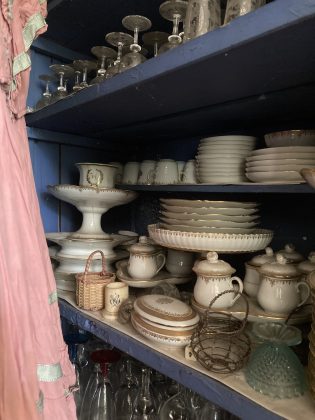
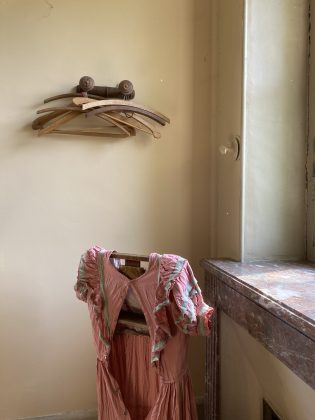
Summer 2023 I spent a week in the ancestral home of Hermine, ‘la funambule femme fantastique’. Also known as ‘Chaos’ in Derek Jarman’s iconic punk film Jubilee, where she sang ‘Non, je ne regrette rien’ whilst walking the tightrope. ‘you had to find out for yourself how to put off the moment of falling’ (Hermine)
Hermine also quotes Jean Cocteau: ‘The gestures of the tightrope walker would look absurd to anyone unaware that she was walking over the void and over death’
Perhaps it was this sense of precariousness that inspired the interventions I made in and around Chateau Sacy. The house itself is a not-quite-inhabited space, it echoes with absence, traces and remains. I found it to be a richly imaginative space for that reason: ‘imagining will always be greater than experiencing…the house provides a space for secrecy as well as for visibility’ (Bachelard). A house is also ‘one of the strongest powers of integration for the thoughts, the memories and dreams…’ (Perla Korosec-Sefaty ‘The Home from Cellar to Attic’).
Amongst stacks of old Paris Match magazines piled up in the attic I came across a photo of a can-can dancer, she was standing on her hands upside down with only her lower legs visible as her skirts swallowed up the rest of her body. Hanging by the magazines was an eclectic collection old clothes: there I found a very similar dress, it had theatrical ruffles and faded stripes, a showgirl’s dress. It was as if it had found me, it was certainly waiting to be found.
The showgirl makes a show of herself. She puts herself on show. But she only shows what she wants to show… My use of the dress played on the relationship between private self and social self, the separation of the two selves were made visible somehow in the form of the dress and its slipping in-between. I was thinking about grief: it’s in the corner of your eye, on the edge of your peripheral vision. It’s always on your mind.
For me, the dress occupied a liminal space on the threshold between life and death: a transitional state. It became an exploration of subjective interiority whilst simultaneously responding to the sensory character of the dress itself and my deep association with it. Thus, it possesses a real materiality yet it’s also a phantom.
2. Part Two. Objects of love, loss and anxiety
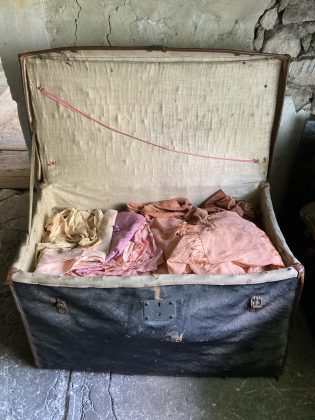

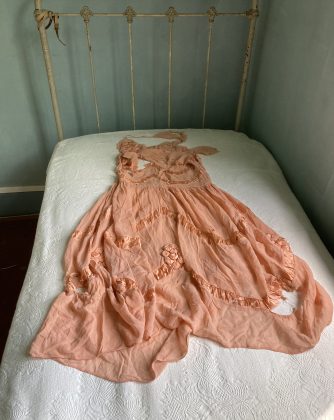
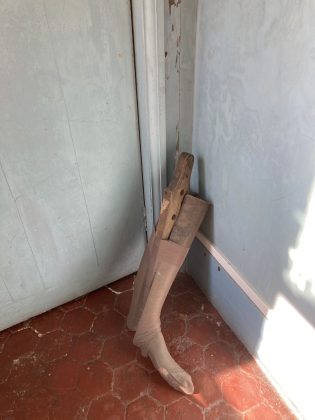
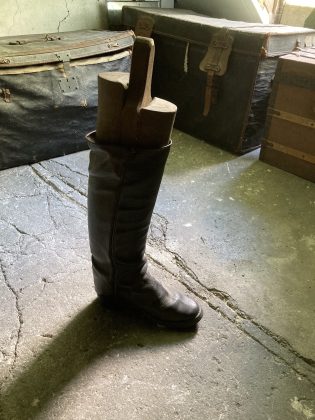
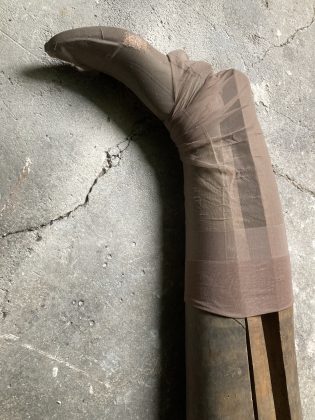
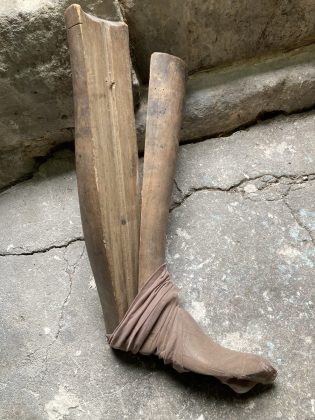

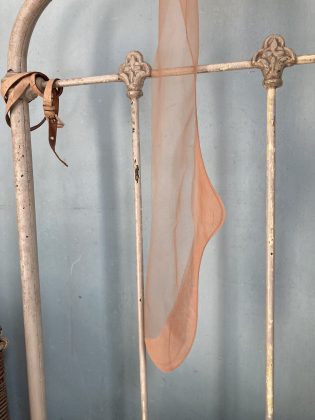
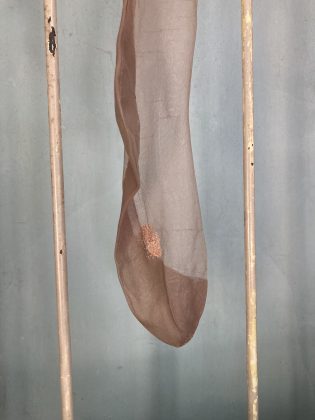
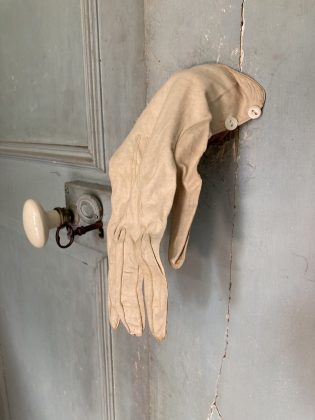
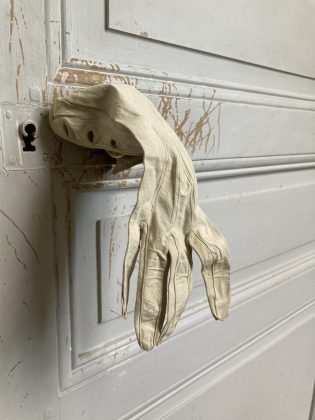
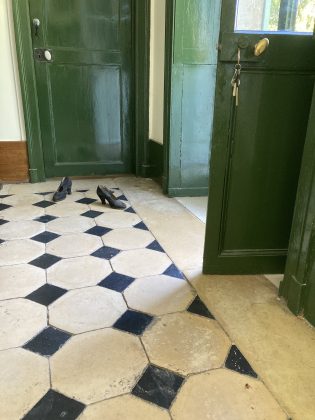
Old objects allow remembering and forgetting. People discard objects when they are ready to. Do things own us as much as we own them?
I happily inhabited the attic with its chests full of old clothing and accessories, whilst avoiding the cellars with their contents unknown. In ‘The Poetics of Space’ the attic, for Bachelard, is a metaphor for clarity of mind and is the place where dreams and imagination reside. It is a hidden place. The literary attic has also been associated with the social oppression of women, of their physical confinement, as well as a place for the release of creative freedom.
A pair of faded, once black, dancing shoes abandoned in the hallway. They would probably dance themselves to death if you let them. A very worn and torn silk dress ‘for best’ but it can no longer hold its own weight and is almost in shreds with its tattered blooms. Handling it with great care, I spread it out with its gaps and holes laid bare. The old irons sailed across its sea of silk whilst brutally weighing it down. An old kid glove: there’s always something sad about a single glove, a lost thing. Its absent hand made elegant yet malignant gestures. Silk stockings from the war era, much darned and mended at heel and toe but also new unworn ones, gossamer fine, such objects of desire. What a war widow would have done, to get her hands on those. Officer boots. Intensely masculine, intimidating objects. I hauled out the heavy wooden ‘trees’ that had been packed tight into the leather for years – released, they split apart like broken limbs on to the concrete floor, with all their splayed vulnerabilities. These broken limbs became props for the healing caress of fine skin stockings.
The attic hides the useless as well as the precious, it ‘allows dwellers to forget things temporarily…relegating something to the attic means giving oneself time to grow indifferent to it, but also the possibility of re-discovering it, or re-appropriating it at any time…’ (Perla Korosec-Sefaty)
3. Part three. Mother, Martyr
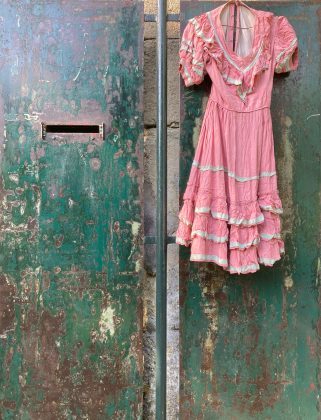

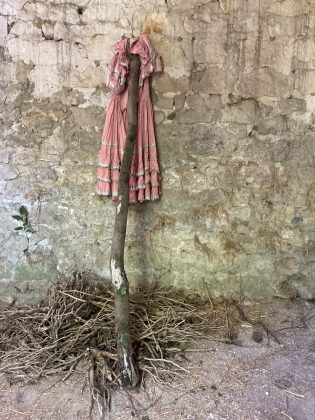

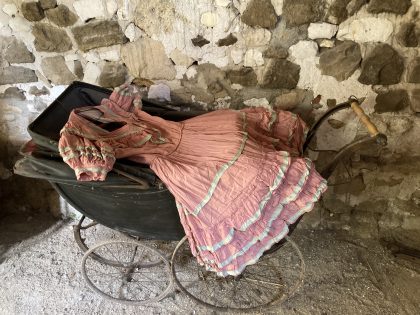
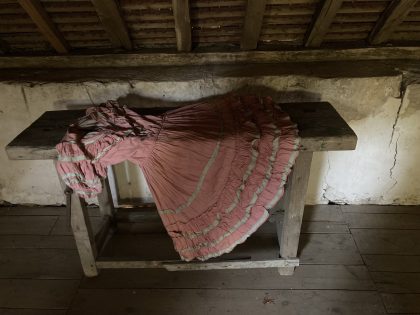
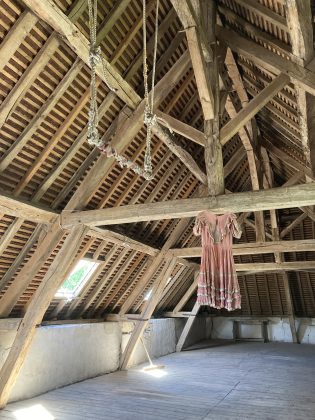

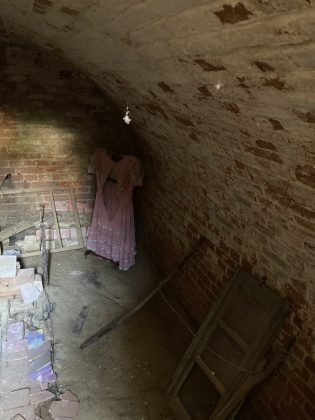
All through the day and through the night the church bell tolled the hour and the half-hour. The quality of the late afternoon light and the heat of August in rural France creates a somnambulist state of mind. Soft glowing colour, textural detail and unexpected shadows and reflections all altered my perception of the dislocated dress and its environs, while exploring the grounds’ hidden and neglected spaces.
The self finds room to be actualised.
The dress was petite but heavy enough to hold its own weight. It was perfectly faded and crumpled. It was whatever I wanted it to be. A shadow self: hidden, repressed or unacknowledged.
The maiden, the mother, the martyr…
In a half-conscious reverie, the visualiser becomes the visionary…
‘Forlorn! the very word is like a bell
To toll me back from thee to my sole self
…Was it a vision, or a waking dream?
…Do I wake or sleep?’ (Keats)
